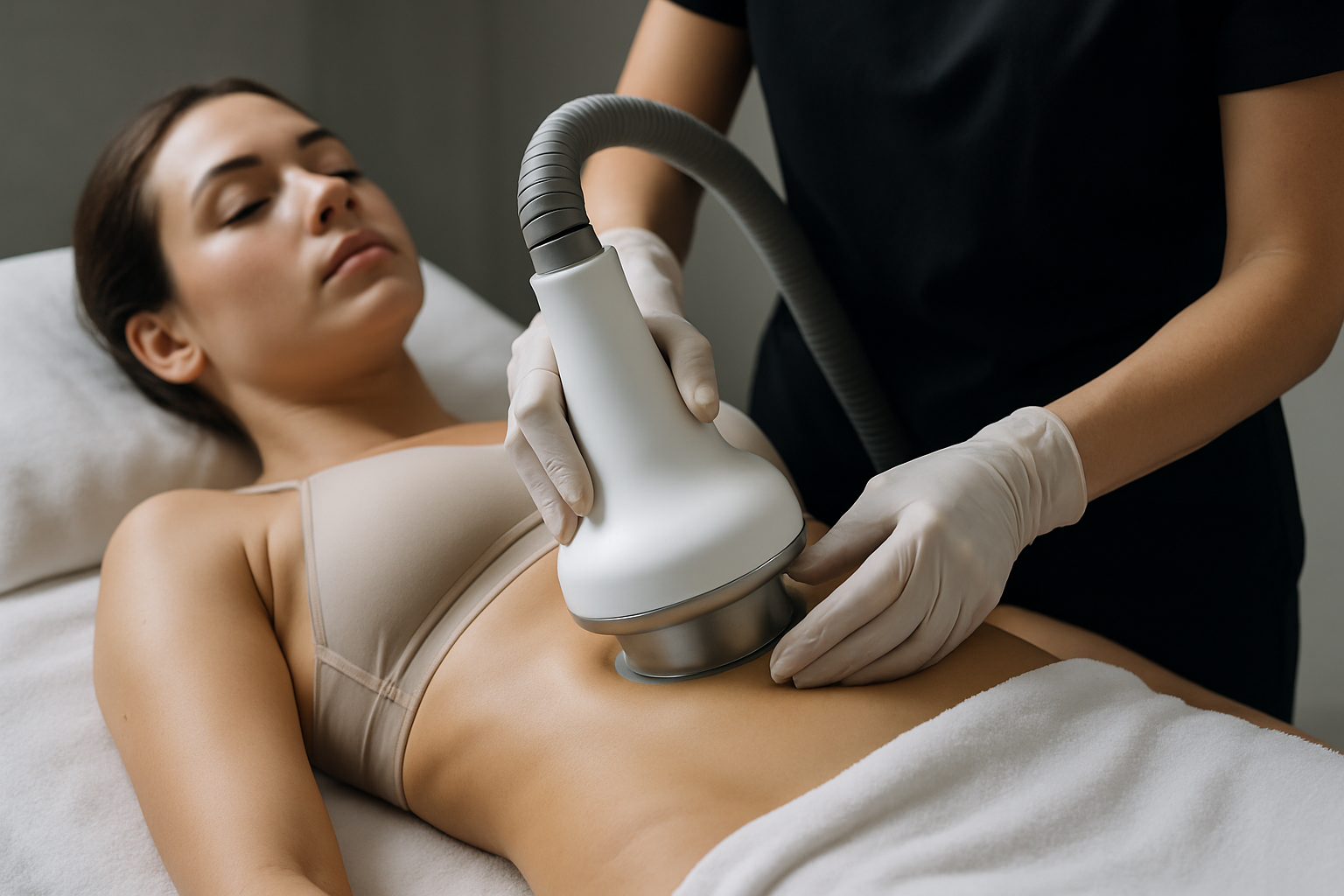Laser Fat Removal: How It Works and What to Expect in 2025
Laser fat removal has become an increasingly popular non-surgical option for body contouring, offering people a way to target stubborn fat deposits without invasive procedures. As technology continues to advance, 2025 brings new developments in laser lipolysis techniques and improved patient outcomes. This minimally invasive treatment uses targeted laser energy to break down fat cells, which are then naturally eliminated by the body's lymphatic system over several weeks following the procedure.

Body contouring technologies have evolved significantly over the past decade, offering individuals new ways to address stubborn fat deposits that resist diet and exercise. Laser fat removal represents one of these innovative approaches, combining thermal energy with the body’s natural metabolic processes to reduce localized fat. Unlike traditional surgical methods, these procedures typically involve minimal downtime and can be performed in outpatient settings, making them accessible to a broader range of candidates.
What Is Laser Lipolysis?
Laser lipolysis, commonly known as laser fat removal, is a minimally invasive cosmetic procedure that uses targeted laser energy to break down fat cells beneath the skin. The process involves inserting a thin fiber optic probe through small incisions, which delivers thermal energy directly to fat deposits. This heat disrupts the structure of fat cells, causing them to rupture and release their contents. The liquefied fat is then naturally processed and eliminated by the body’s lymphatic system over several weeks following treatment. Unlike traditional liposuction that physically removes fat through suction, laser lipolysis relies on the body’s metabolism to clear away the destroyed cells. The procedure also stimulates collagen production in the treated area, which can lead to some skin tightening effects alongside fat reduction.
How Laser Fat Removal Works
The mechanism behind laser fat removal involves several biological processes working together. During the procedure, a qualified practitioner makes tiny incisions in the target area and inserts a laser fiber beneath the skin. The laser emits wavelengths specifically designed to target adipose tissue while minimizing damage to surrounding structures like blood vessels and nerves. As the laser energy heats the fat cells to a critical temperature, their membranes break down and the triglycerides inside are released into the interstitial space. Over the following weeks and months, the body’s immune system recognizes these cellular remnants as waste material and gradually removes them through natural metabolic pathways. The thermal effect also causes collagen fibers in the dermis to contract and remodel, potentially improving skin texture and firmness in the treated region. Most procedures take between one to three hours depending on the number of areas being addressed.
Common Treatment Areas
Laser fat removal can be applied to various parts of the body where stubborn fat accumulates. The abdomen remains one of the most frequently treated areas, particularly for individuals seeking to reduce belly fat that persists despite healthy lifestyle habits. The flanks or love handles are also popular treatment sites, as these areas often respond well to laser-assisted reduction. Thighs, both inner and outer, represent another common target zone, especially for those concerned about proportional body contouring. The upper arms, chin and neck area, and back are additional regions where laser lipolysis may be performed. Some practitioners also treat the chest area in men experiencing pseudogynecomastia. The suitability of each area depends on factors like skin elasticity, fat thickness, and overall health status. Ideal candidates typically have relatively good skin tone and localized fat deposits rather than generalized obesity.
What to Expect During and After the Procedure
Before undergoing laser fat removal, patients typically attend a consultation where the practitioner assesses their candidacy and discusses realistic expectations. On the day of the procedure, local anesthesia is administered to numb the treatment area, though some patients may receive mild sedation for comfort. The actual treatment involves making small incisions, inserting the laser fiber, and methodically treating the targeted fat deposits. Patients often remain awake and may feel warmth or mild pressure during the process. Immediately after treatment, compression garments are usually applied to help reduce swelling and support the healing process. Most people experience some bruising, swelling, and tenderness in the treated areas for several days to weeks. Recovery time varies, but many individuals return to light activities within a few days and resume normal exercise routines within two to four weeks. Results begin to appear gradually as the body processes the disrupted fat cells, with optimal outcomes typically visible three to six months post-procedure. Multiple sessions may be recommended for larger areas or more significant reduction goals.
Average Cost in 2025
The financial investment for laser fat removal varies considerably based on multiple factors including geographic location, practitioner experience, facility type, and the extent of treatment required. Understanding typical pricing structures helps potential patients plan appropriately and make informed decisions.
| Treatment Area | Provider Type | Cost Estimation (INR) |
|---|---|---|
| Small area (chin, upper arms) | Dermatology clinic | 40,000 - 80,000 per session |
| Medium area (abdomen, flanks) | Cosmetic surgery center | 80,000 - 1,50,000 per session |
| Large area (thighs, back) | Hospital cosmetic department | 1,20,000 - 2,00,000 per session |
| Multiple areas (combination) | Specialized aesthetic clinic | 1,80,000 - 3,50,000 per treatment |
Prices, rates, or cost estimates mentioned in this article are based on the latest available information but may change over time. Independent research is advised before making financial decisions.
Several elements influence the final cost of laser fat removal procedures. The specific technology used varies between providers, with newer or more advanced laser systems often commanding higher fees. Practitioner qualifications and reputation also affect pricing, as highly experienced cosmetic surgeons or dermatologists typically charge more than less established practitioners. Geographic location plays a significant role, with metropolitan areas generally having higher costs than smaller cities. The number of treatment sessions needed impacts total expenditure, as some individuals require multiple visits to achieve desired results. Additional expenses may include pre-procedure consultations, post-treatment garments, follow-up appointments, and any necessary touch-up sessions. Some facilities offer package deals for treating multiple areas simultaneously, which may provide better value than individual treatments. Patients should inquire about all associated costs during initial consultations to avoid unexpected expenses.
Considerations Before Choosing Laser Fat Removal
While laser fat removal offers advantages over traditional surgical methods, it is not suitable for everyone. Ideal candidates are generally within a healthy weight range and have specific areas of localized fat they wish to address. The procedure is not designed as a weight loss solution for individuals with significant obesity, and realistic expectations are crucial for satisfaction with results. Potential risks and side effects, though generally mild, include temporary numbness, infection at incision sites, irregular contours, and skin discoloration. Choosing a qualified and experienced practitioner is essential for minimizing complications and achieving optimal outcomes. Prospective patients should verify credentials, review before-and-after photos of previous cases, and ask detailed questions about the specific laser technology being used. Maintaining results requires ongoing commitment to healthy eating habits and regular physical activity, as remaining fat cells can still expand if caloric intake exceeds expenditure. Some individuals may benefit more from alternative body contouring methods depending on their specific anatomy and goals.
Conclusion
Laser fat removal represents a viable option for individuals seeking to reduce stubborn fat deposits through minimally invasive means. Understanding the science behind the procedure, typical treatment areas, recovery expectations, and financial considerations enables informed decision-making. As with any cosmetic procedure, thorough research, realistic expectations, and consultation with qualified professionals are essential steps toward achieving satisfactory results. The technology continues to evolve, offering improved precision and outcomes for appropriate candidates in 2025 and beyond.
This article is for informational purposes only and should not be considered medical advice. Please consult a qualified healthcare professional for personalized guidance and treatment.




